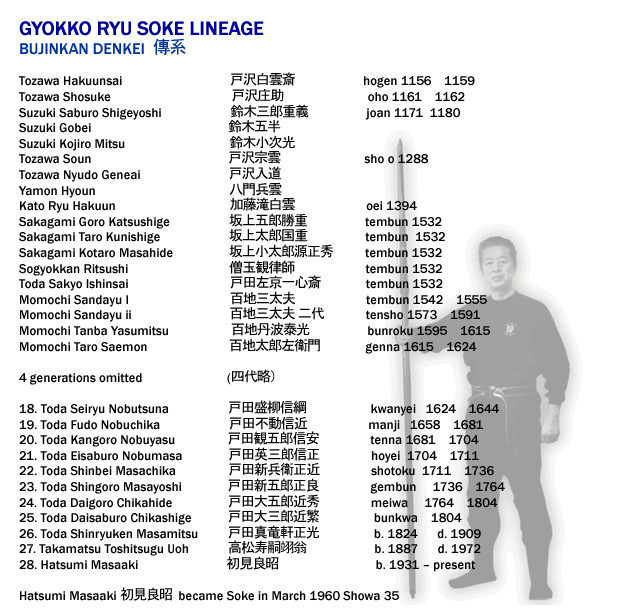
JEWELED TIGER SCHOOL

HISTORY OF GYOKKO RYU
Kosshijutsu
During the Chinese Tang Dynasty (618 AD – 907 AD), Cho Busho and Yo Gyokko supposedly left warring China and arrived in Japan, bringing with them the foundation upon which the Gyokko Ryu would later be based. Some say that the original techniques from the school were created by a princess in the Chinese Imperial Court who used quick body movements to attack specific targets on the body. Which correlates with the Kosshijutsu striking techniques of this school. History and our research tells us that the oldest martial art schools from India, Tibet, and China where called tiger striking (kosshijutsu) schools and Gyokko Ryu is the jeweled tiger school.
The Kihon Happo is made from the first two levels of the Gyokko Ryu, Ki Gata, and Torite Kihon Gata, which are also the basic techniques of the school. Typical for the Gyokko Ryu are the powerful blocks and balance taking. The school specializes in techniques that involve Kosshijutsu (attack against muscles) and Shitojutsu (use of thumbs and fingers). Kosshijutsu means “to knock down the enemy with one finger”. Koshi could also mean ‘backbone’, as Kosshijutsu is the backbone of martial arts. Togakure Ryu Ninpo Taijutsu is a distant branch of the Gyokko Ryu Kosshijutsu.
The Gyokko Ryu uses “Ten Ryaku Uchu Gassho” (heaven and universe prayer), Chi Ryaku Futen Goshin Gassho (circle of wind prayer), Jin Ryaku Chi Sui Ka Fu Henka Ryaku (circle of earth, water, fire, wind prayer).
Gassho Kuji Kiri is “Kongo’ (cloud), Suirin (water ring), Kaku Gassho (fire and winds). These are also called the ‘Sanpo Gassho’ (three treasures) and they also appear in the Koto Ryu.
The Gyokko Ryu is broken down
into five levels:
- Ki Gata – 5 techniques
- Torite Kihon Gata – 10 techniques
- Jo Ryaku no Maki – 12 techniques
- Chu Ryaku no Maki – 8 techniques
- Ge Ryaku no Maki – 8 techniques
The katas of the Koppo San Ryaku Hiden are also known as Jo Ryaku no Maki (higher level), Chu Ryaku no Maki (intermediate level), and Ge Ryaku no Maki (lower level). Each is written as a separate scroll.
Also in the Gyokko Ryu is Kurai Dori (sizing up the situation), Shin Shingan (God’s heart, God’s eyes), Tenmon Chimon (heaven, earth tactics).
The Gyokko Ryu has one fundamental rule: destroy the enemy’s power, but leave his life. The Gyokko Ryu states that when a fight is about to start, do not let the opponent win, but take him down with a technique that is only as strong as is needed to match the situation. They also have another saying in the Gyokko Ryu, “Bushigokoro wo motte totoshi no nasu” (The warrior’s heart is precious and essential).
The Sanshin no kata is one of the hiden (secret transmissions). Takamatsu taught this only to Hatsumi Sensei.
The following are
nine rules of the Gyokko Ryu:
1) The character ‘nin’ means to guard the nation with one’s life
2) Forget the self, be patient, and do not fear dying
3) When in danger say or show nothing
4) As a strong enemy comes, keep an indomitable spirit
5) Serve and protect the master as you must your own parents
6) Vices dissipate your proficiency
7) Being drunk affects your judgment
8) Destroy your enemy’s power but not his life
9) Don’t teach to others without the master’s permission
